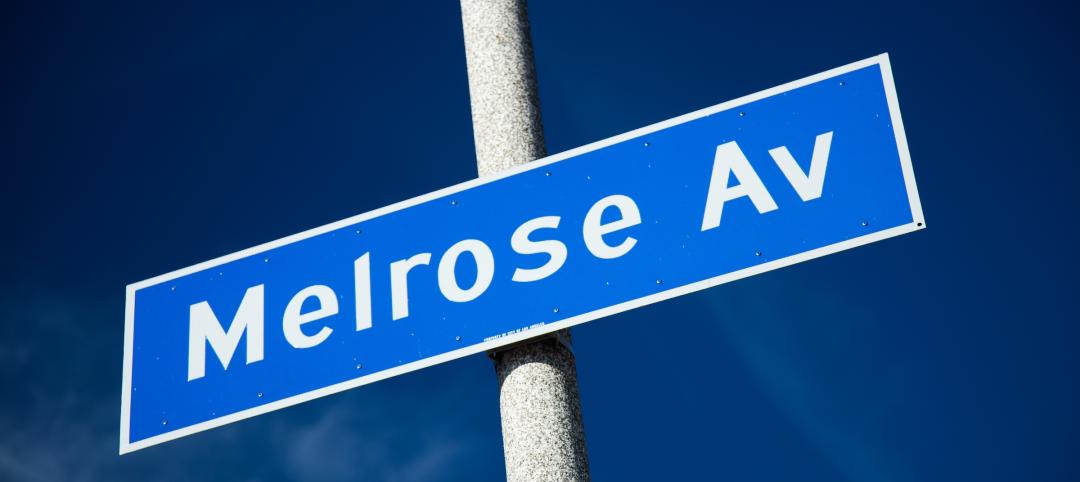Much of the spirited discussion around LEED v4 has been centered on the Materials & Resources Credit, Building Products Disclosure and Optimization – Material Ingredients—especially with regard to building products containing substances that could be toxic to humans or the environment.
At least one voice in the wilderness is shouting for greater attention to another huge change in LEED: the shift to ASHRAE 90.1-2010 as the new reference standard for Energy & Atmosphere prerequisites and credits. “That’s the real story in LEED v4, from an MEP point of view,” says Scott Bowman, PE, LEED Fellow. “The change to 90.1-2010 makes v4 much more rigorous.”
Bowman, who recently retired as Corporate Sustainability Leader at KJWW Engineering Consultants (where he was involved in 119 LEED-certified projects), says Building Teams need to start warning their clients that it’s going to be a lot tougher to reach LEED Gold or Platinum under v4. He says that some of the 14 LEED Platinum projects that he worked on at KJWW might barely squeak by with a Silver or Gold rating under v4. Projects that were Silver or Gold might not even reach certified.
“We need to be working on our clients’ expectations now, because the changes that are coming are going to be significant,” says Bowman, who recently established his own consultancy, Integrated Design + Energy Advisors, known as IDEA. “Our clients should know that we may have to do a couple more runs on the energy modeling for the design”—and that could mean additional fees.
Raising the bar for commissioning in LEED v4
Engineering consultant Scott Bowman says commissioning is a whole new game in LEED v4. The fundamental commissioning and verification prerequisite has added design review as a requirement, but he’s not sanguine about the methodology. “It could mean that an engineer on the project could be reviewing the work of another engineer from the same firm,” says Bowman. “For the review to be of value, there should be an independent third party.”
The Cx prerequisite also requires the Building Team to prepare an operations and maintenance plan, somewhat like a systems manual but less extensive. Bowman warns that preparing this document likely will add to the costs of v4 certification. “Clients should understand that your old rule of thumb on commissioning costs may be out of date.”
Bowman says he’s encouraged by the requirement (in the v4 Cx prerequisite) for exterior enclosures to be included in the owner’s project requirements (OPR) and basis of design. “OPR is the most underutilized management tool in our industry,” he says. “We need to do better OPRs.”
But he’s not crazy about a requirement that a design team member who is not directly involved in the design of the exterior enclosure complete a review of the enclosure design. “It could be just a different person from the same design firm checking the work,” he says. “That’s very squishy.”
Two points are also available under Enhanced Commissioning for envelope commissioning, but Bowman says he is disappointed that some of the MEP services that were required in the Enhanced Cx credit have been put into the Cx prerequisite.
The intent—to give Building Teams a toehold on envelope commissioning—is an honorable one, says Bowman. “I look forward to a future when envelope commissioning is a fundamental, but I don’t think LEED has defined it well enough yet,” he says.
“We had a major jump from 90.1-2004 to 90.1-2010,” says Bowman, a second-generation engineer. He points to data from the Energy Department’s Pacific Northwest National Lab: energy use intensity (EUI) was reduced 4.5% moving from ASHRAE 90.1-2004 to 90.1-2007, but 90.1-2010 brings it down a much more demanding 18.5%.
LEED v4 buildings will have to be 30% better on EUI improvement just to meet the prerequisite, he says, “and they have to go even higher to get EA points.”
Key technical improvements in v4 EA credits, according to Bowman:
• Minimum energy performance has to be 5% above ASHRAE 90.1-2010, 3% for renovation projects; minimum Energy Star rating must be 75 or better.
• Building-level energy metering is now required for all buildings.
• Demand response is now a credit. Projects can earn up to two points for installing systems necessary to participate in a demand response program. Projects located in areas with no demand response program can earn a point by making the building ready to engage in such a program. “The idea of preparing buildings for demand response is a good one,” says Bowman.
Strategies that once were nice-to-haves are now required. “If you have clerestories and skylights, you have to have daylighting controls,” says Bowman. “Before v4, it was a strategy, now it’s a requisite.” Lighting power density is also much more stringent, he says.
Building Teams are going to have to reach higher in their building envelope designs, says Bowman. “You can’t rely on the mechanical/electrical system alone to help you comply with v4,” he warns. “You only get one chance with the envelope. Some of our 100-year-old buildings still have single-pane glass! We need to encourage clients to invest more in good windows, walls, and roofs.”
A similar philosophy guides the use of renewables in LEED v4: the project must meet the requisite energy performance levels before renewables can be applied. “The idea in high performance is: first, use less energy; then, use it efficiently; and then, and only then, make it on site, via renewables,” says Bowman. “You can’t use PVs to make up for a bad building.”
Measurement and verification credits have been heavily modified under v4, in Bowman’s view. “Under LEED 2009, M&V attempted to guide projects to measure energy use on a much more granular basis than before, but it was not implemented very much, and it really was more of an operational credit,” something that should be in LEED EBOM, he says. LEED v4 sets a prerequisite for building-level energy metering. “That’s not going to be a problem for 99% of LEED v4 projects,” says Bowman. The only possible exception: campus projects.

LEED v4 buildings will have to be 30% better on EUI improvement just to meet the new prerequisite. ILLUSTRATION: COURTESY PNNL
Bowman also likes Credit EAc3, Advanced Energy Metering, one of the credits that replaced M&V and can earn a point for metering all energy end uses representing 10% or more of total energy use in the building. Meters must be connected to the building automation system; data must be logged at appropriate intervals and stored for 36 months. “This is a good step, to encourage energy metering,” he says. “The cost of these devices has been coming down dramatically, and this will become standard among higher-level clients.”
Bowman reminds Building Teams to keep their clients posted on the energy components of LEED v4. “The energy side is where the v4 story is,” he says. “If I had a criticism of LEED, it is that we didn’t have as much of a jump in energy requirements between LEED 2.2 and LEED 2009. We really didn’t push the technology that far.”
LEED v4 does.
Scott Bowman (bowmansc.scb@gmail.com) was scheduled to present his views on LEED v4 at BuildingCHICAGO/Greening the Heartland. He will be inducted as a LEED Fellow at Greenbuild on October 23.
Related Stories
Cultural Facilities | Aug 21, 2024
Baltimore’s National Aquarium opens 10,000-sf floating wetland that mimics the harbor’s original tidal marsh habitat
The National Aquarium in Baltimore has opened the National Aquarium Harbor Wetland, a 10,000-sf floating wetland that mimics the Inner Harbor’s original Chesapeake Bay tidal marsh habitat. Located between Piers 3 and 4 on Baltimore’s Inner Harbor, the $14 million project features more than 32,000 native shrubs and marsh grasses.
Mixed-Use | Aug 21, 2024
Adaptive reuse of a Sears store becomes luxury mixed-use housing
6 Corners Lofts at 4714 W Irving Park Road, Chicago, Ill., opened in March of 2024 as a 394,000-sf adaptive reuse project born out of a former Sears store.
Building Materials | Aug 19, 2024
Federal 'buy clean' construction materials label program unveiled
The U.S. Environmental Protection Agency announced a plan for implementing a new label program to boost American production of more climate-friendly construction materials and products. The label program will prioritize steel, glass, asphalt and concrete.
Museums | Aug 19, 2024
The Tampa Museum of Art will soon undergo a $110 million expansion
In Tampa, Fla., the Tampa Museum of Art will soon undergo a 77,904-sf Centennial Expansion project. The museum plans to reach its $110 million fundraising goal by late 2024 or early 2025 and then break ground. Designed by Weiss/Manfredi, and with construction manager The Beck Group, the expansion will redefine the museum’s surrounding site.
AEC Tech | Aug 19, 2024
Harnessing AI to revolutionize architectural design and creativity
Architects are wondering if AI will replace us. For Vessel, the gains offset the fear. We believe there is wisdom in the unattributed quote, “You won’t lose your job to AI. You will lose your job to someone using AI.”
Reconstruction & Renovation | Aug 19, 2024
Movement to protect historic buildings raises sharp criticism
While the movement to preserve historic buildings has widespread support, it also has some sharp critics with well-funded opposition groups springing up in recent years. Some opponents are linked to the Stand Together Foundation, founded and bankrolled by the Koch family’s conservative philanthropic organization, according to a column in Governing magazine.
Government Buildings | Aug 19, 2024
GSA posts new RFI for enabling energy efficiency, decarbonization in commercial buildings
The U.S. General Services Administration (GSA), in collaboration with the U.S. Department of Energy, recently released a new Request For Information (RFI) focused on enabling energy efficiency and decarbonization in commercial buildings. GSA wants to test innovative technologies through GSA’s Center for Emerging Building Technologies.
MFPRO+ New Projects | Aug 16, 2024
At 60 stories, the Paramount multifamily development will stand as Nashville’s tallest high rise
When complete, the 60-story Paramount building, at 750 feet high, will be the tallest high rise tower in Nashville, Tenn., surpassing the city’s current record holder, the 617-foot AT&T Building. The $390 million Paramount project recently launched condo sales after securing more than $230 million in construction financing.
Urban Planning | Aug 15, 2024
New York City begins first large-scale porous pavement installation
New York City is installing its first large-scale porous pavement installation along seven miles of roadway in Brooklyn. The project will keep 35 million gallons of stormwater out of the combined sewer system each year, according to a news release.
Urban Planning | Aug 15, 2024
The magic of L.A.’s Melrose Mile
Great streets are generally not initially curated or willed into being. Rather, they emerge organically from unintentional synergies of commercial, business, cultural and economic drivers. L.A.’s Melrose Avenue is a prime example.

















